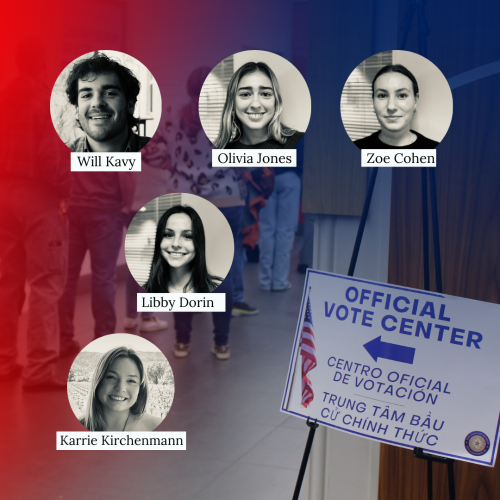Two-year-old twins, Taylor and Sloane, like coloring, swimming, and talking to Siri. Yes Siri, the personal assistant with the robotic voice that lives inside your iPhone.
“Hi Siri! How are you today?” Taylor asks as she holds down the round button at the bottom of my iPhone 5, making Siri come to life.
Taylor and Sloane’s parents are actually very strict when it comes to letting the girls play with smartphones or tablets. But even with extremely limited access to these devices, the two-year-old twins still know how to unlock an iPhone, talk to Siri, and even take a selfie.

We live in the 21st century where a technological device is almost always within arms reach. Because of this, it is becoming increasingly hard for parents to limit their children’s access to technology. Babies see their parents use their smartphones and tablets all the time. Even parents that are strict on screen time struggle to resist letting their children look or touch the devices when they are using them.
As a result, children like Taylor and Sloane are part of a growing generation of tech-savvy tykes. By 24 months old most toddlers know as much about using a smartphone or tablet as many of the Baby Boomers.
I fear the day that I walk into an Apple store and standing behind the Genius Bar is a crew of diaper strapped toddlers, eagerly waiting to help update my newest iPhone.
Genius Bar babies is an absurd idea, but so is the fact that 38 percent of babies under the age of two use tablets or smartphones regularly, up from 10 percent in 2011, according to a report by San Francisco-based Common Sense Media.
Toys like blocks, floor puzzles, and cardboard books are being replaced with interactive electronic gadgets and apps. It is not unusual to see a toddler pick up an iPhone and confidently start pressing buttons, swiping from screen to screen.
As if teaching toddlers to talk, walk, and use the toilet wasn’t hard enough, if these trends continue we can plan on adding social media etiquette and e-mail 101 to the under-two to-do list.
The company Fisher-Price sparked outrage amongst parents and pediatricians alike when they released a 21st century version of the age-old bouncy seat. ‘The Newborn-to-Toddler Apptivity Seat for iPad’ device looks almost exactly like a normal baby bouncy chair… except for the addition of an arm that allows for an iPad to hang over the baby’s face.
The product description on Amazon reads: “Lock your iPad device inside the case to protect from dribbles and drool. Play and learning are at baby’s fingertips with free apps you can download for your iPad.”
This product begs the question, do children who still “dribble and drool” really need technology within fingertips distance?
I am a millennial. I am part of the most technologically savvy (and possibly obsessed) generation to date. I tweet, check Facebook, and post Instagrams like it is my part-time job. And even I say this is absolutely ridiculous.
The American Association of Pediatricians recommends no screen time for children under the age of two, noting that “a child’s brain develops rapidly during these first years, and young children learn best by interacting with people, not screens.”
Researchers at Boston University School of Medicine warned “that using a tablet or smartphone to divert a child’s attention could be detrimental to their social and emotional development.”
But despite an increasing amount of research suggesting the negative affects of technology on children, the popularity of technology continues to increase amongst bottle wielding tots. A recent study by the Joan Ganz Cooney Center found that kids ages 2-5 spend an average of three and a half hours a day watching TV and 25 percent of children under the age of five use the Internet daily.
I took Taylor and Sloane on a walk one Saturday afternoon. “Look Ms. Bekah! It’s a nimbus cloud!” Sloane said to me.
“Nimbus cloud?” I think. I quickly rack my brain trying to remember what I learned about clouds in my middle school science class.
And then it hits me, literally. A cold wet raindrop plops down on my forehead.
Nimbus, the rain cloud.
Taylor and Sloane are light years ahead of most two-year-olds. No, they aren’t geniuses, but their parents are. Their mom and dad made a choice to pour knowledge into their children through face-to-face interaction, not through a screen. And as a result, their girls challenge me to remember science facts, not to beat their score on the latest and greatest “educational” tablet game.
This is how it should be.









